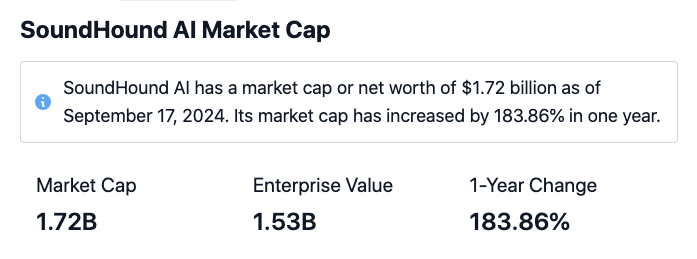20 Handy Ways For Picking Stocks Ai Sites
20 Handy Ways For Picking Stocks Ai Sites
Blog Article
Top 10 Tips For Evaluating The Strategy Customization Of Ai Stock Predicting/Analysing Trading Platforms
It is crucial to remember that AI trading platforms with stock analysis and prediction are able to offer users the option of customizing their platform according to their trading goals, risk tolerances, and market conditions. A platform that offers flexible options for customization can dramatically increase the effectiveness of trading. Here are 10 guidelines for evaluating the customizability of the platforms.
1. Evaluate Pre-Built Strategy Templates
A Variety of Templates: Check whether the platform that you trade on offers pre-built templates for various types of trading (e.g. Day Trading or Swing Trading, Long-Term Investment).
Utilizability: Find out the ease with which these templates could be altered to meet your specific needs.
Performance history: Confirm that the platform has previous data on performance that can be used to create the strategic plans that have been pre-built.
2. Review the Custom Strategy Development
Drag-and-drop tools: Search for platforms that provide intuitive drag and drop interfaces to allow you to personalize strategies.
Options for Coding: For users who are more advanced make sure the platform supports custom programming in proprietary scripting language (e.g. Python, R).
Flexibility. Be sure to define key components such as the parameters for risk management, entry and exit regulations, and any other elements that make up your plan.
3. Check for Backtesting Capabilities
Historical data: Check if the platform is able to provide enough historical data to backtest your strategies.
Customizable settings: Be sure you have the capability to modify settings during backtesting.
Performance metrics: Check whether the platform provides precise performance metrics for example, win rate (e.g. Sharpe ratio), drawdown, and other indicators to determine if the strategies have been back-tested.
4. Evaluate Real-Time Strategy Testing
Paper trading Strategies can be tested in real-time with simulation or paper trading.
Live testing: Determine whether you can test strategies live in markets using very little capital to evaluate their performance.
Real-time adjustments: Examine to find out if your plan can be adjusted in real time according to market conditions.
5. Evaluate the level of integration based on technological indicators
Indicator library - See whether the platform has an extensive library of indicators that are technical, such as moving averages (e.g. RSI), MACD or RSI.
Custom indicators - Make sure you can make or import your own custom indicators.
Combinations of indicators: Check whether the platform supports the combination of multiple indicators to create more complicated strategies.
6. Check for Risk Management Tools
Stop-loss/take-profit: Ensure the platform allows you to set stop-loss and take-profit levels within your strategies.
Size of the position. Find out if you are able to create rules for sizing positions (e.g. percentage or a fixed amount) and control the risk.
Risk-reward ratio: Verify whether the platform can set risk-reward ratios for specific strategies or trades.
7. Evaluate Multi-Asset Strategy Support
Asset classes: Ensure that the platform provides strategies for a variety of asset classes.
Strategies for cross-assets : You can try to create strategies involving multiple asset categories (e.g. pair trading or hedges).
Market coverage: Check if the platform has coverage for the markets you're looking for (e.g., US, international, cryptocurrencies).
8. Assess Automation & Execution
Automated trading: Make sure the platform supports automated execution of strategies using predefined rules.
Types of orders: Find out the platform that supports various types of orders (e.g. market, limit, and stop) to carry out your strategy.
Latency: Make sure that the platform is running at low latency when trading, particularly if you employ high-frequency strategies.
9. Check out Strategy Optimization Tools
Parameter Optimization: Make sure whether the platform offers tools to optimize the parameters of strategies (e.g. genetic algorithms, grid search).
Machine Learning Integration: Determine whether a platform incorporates machine-learning to refine and optimize strategy.
Analysis of scenarios: Check whether the platform permits testing strategies in different market conditions (e.g. bear, bull, volatile).
Review User Comments
User feedback: Utilize reviews from users to assess the efficiency of the platform to tailor strategies.
Community forums: Check whether you can locate a forum where users discuss and share their custom strategies.
Support resources: Ensure that the platform offers tutorials, webinars or documentation to help users create and enhance their strategies.
Bonus Tips:
Trial period: Test the features of the platform to customize your experience at no cost by registering for a trial or demo.
Scalability - Make sure that the platform you choose can adapt to your changing trading strategies.
Customer support Find out if there is assistance available to address questions or concerns related to strategy.
These suggestions will allow you to analyze the various customization options available to AI trading platforms which can predict or analyze stocks. This way you'll be able select one that is compatible with your trading goals, and allows you refine and implement strategies. A platform that offers strong customization options can empower you to adapt to changing market conditions and boost the performance of your trading. View the recommended invest ai examples for blog examples including ai options trading, chart ai for trading, ai trading bot, ai hedge fund outperforms market, ai copyright trading bot, ai investment advisor, free ai tool for stock market india, copyright financial advisor, free ai trading bot, best stock analysis website and more.
Top 10 Tips To Assess The Transparency Of Stock Trading Platforms
Transparency is a critical aspect when it comes to evaluating AI-driven stock prediction and trading platforms. Transparency allows users to be confident in the operation of the platform, comprehend the reasoning behind their decisions, and confirm the reliability of forecasts. These are the top ten tips to assess transparency in these platforms.
1. Clear Explanation of AI Models
TIP: Make sure the platform clearly explains AI models and algorithms utilized for prediction.
The reason is that understanding the basic technology helps users assess its credibility.
2. Disclosure of Source Data
TIP: Determine if the platform makes public the data sources it uses (e.g., historical stock data, news, social media).
What's the reason? Knowing where data comes from can help ensure that the platform is using precise and complete information.
3. Backtesting and Performance Metrics
TIP: Ensure there is transparency in the performance metrics reported (e.g. accuracy rates or ROI) and backtesting results.
This gives users to compare historical performance with current platform.
4. Real-Time Updates and Notifications
Tips - Make sure to check whether there are any real-time notifications, updates, and trades on the platform.
What is the reason: Realtime transparency gives users constant details about crucial actions.
5. Limitations and Open Communication
TIP: Find out if the platform openly discusses the risks and limitations of its trading strategies.
What is the reason? Recognizing limitations builds trust and allows users to make informed choices.
6. Raw Data Access for Users
Tip: Determine whether the AI model can be used to access raw data or intermediate results, or both.
The reason: Raw data is a great way to confirm the predictions of others and to conduct an analysis.
7. Transparency on Fees and Charges
Make sure you read the terms and conditions on the platform you're thinking of using.
Transparent pricing lowers the chance of unexpected expenses, and fosters confidence.
8. Regular reports and audits
Check if a platform produces regular reports and is subject to third party audits in order to confirm the effectiveness of its operation.
The reason: Independent verification adds credibility, and also ensures accountability.
9. Explainability in Predictions
Tip: Check if the platform provides information on how predictions or recommendations (e.g. importance of feature and decision tree) are generated.
Why? Explainability allows users to gain insight into the rationale behind AI-driven actions.
10. User Feedback Channels and Support
TIP: Make sure that the platform offers open channels for feedback and support from users, and if they provide a clear response to users' concerns.
Why: Responsive communications demonstrate an interest in the transparency of communications and satisfaction of users.
Bonus Tip: Regulatory Compliance
Verify that the platform adheres to financial regulations that are relevant and declares its compliance status. This adds another layer of trustworthiness to the platform.
If you take the time to carefully examine these factors it is possible to evaluate whether an AI-based stock prediction or trading system functions in a transparent way. This lets you make educated decisions and develop confidence in its capabilities. Read the recommended read full article about best ai stock trading bot free for more tips including best ai etf, best stock analysis app, stock analysis websites, ai investing app, trader ai app, trader ai app, best ai for trading, ai for investing, ai chart analysis, copyright financial advisor and more.